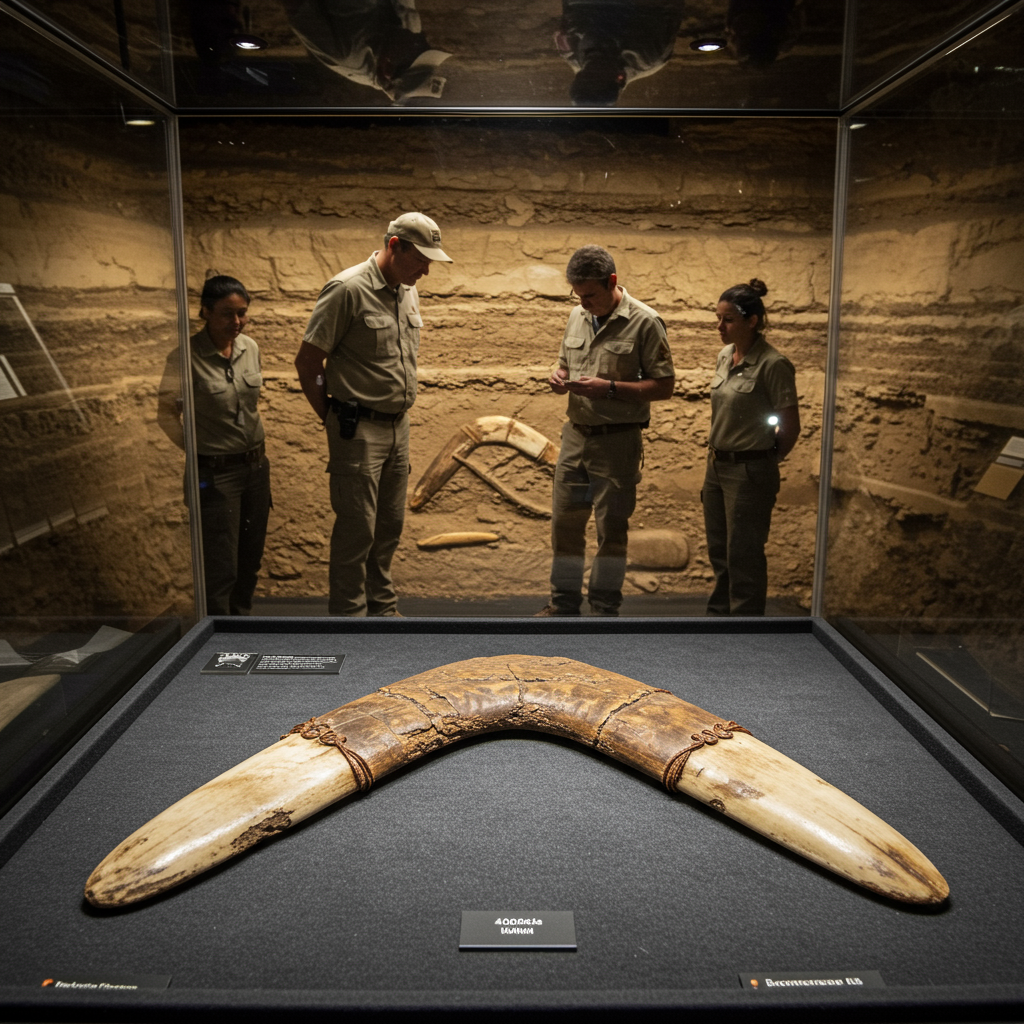World’s Oldest Boomerang Discovered in Poland: A Window into Ancient Ingenuity
Imagine a tool crafted with aerodynamic precision, not from wood, but from the massive tusk of a mammoth. Archaeologists have unveiled new insights into just such an object – a boomerang found in a Polish cave that is now confirmed as the oldest ever discovered, pushing back the timeline for sophisticated toolmaking by early humans in Europe.
Found originally in Oblazowa Cave in southern Poland in 1985, this ancient artifact was initially estimated to be around 30,000 years old. However, recent, more reliable radiocarbon dating conducted on associated human and animal bones from the site has dramatically recalibrated its age, placing it firmly between 39,000 and 42,000 years ago. This new timeline makes it the undisputed oldest known boomerang globally.
Crafted with Astonishing Skill
The boomerang is a testament to the remarkable skill and ingenuity of the Homo sapiens living during the Paleolithic period. Fashioned expertly from a mammoth’s tusk or ivory, the curved tool is described as being roughly the size of a baseball bat. Researchers were particularly impressed by the level of craftsmanship required to shape such a dense material into a functional object.
The artifact is exceptionally well preserved, bearing distinct score marks. These markings suggest it underwent meticulous polishing and carving, and based on their nature, researchers infer it was likely designed for and used by a right-handed individual.
A Hunting Tool, Not Designed to Return
Unlike the popular image of boomerangs that arc back to the thrower, the shape and design of this ancient Polish tool indicate a different purpose. Based on its specific aerodynamics, researchers determined it would have flown effectively when thrown, but crucially, it was not engineered to return.
This non-returning design strongly suggests its primary function was as a hunting weapon. While it could have been thrown to bring down prey, researchers also acknowledge the possibility that it held deeper cultural or artistic significance, perhaps playing a role in ancient rituals or ceremonies.
Significant Insight into Early Human Behavior
Dr. Sahra Talamo of the University of Bologna, a key figure in the research, highlighted the immense value of this discovery. She noted that it is not only the oldest boomerang ever found but also unique in its shape, length, and material composition for a find in Poland.
Dr. Talamo emphasized that the artifact offers “remarkable insight” into the behavior and capabilities of early Homo sapiens living as far back as 42,000 years ago. The ability to create “such a perfect object” demonstrates their advanced ingenuity and understanding of the physics required to craft an effective hunting tool. This discovery significantly pushes back the timeline for sophisticated toolmaking, particularly the use of mammoth ivory, in Europe.
Boomerangs Across Continents
While boomerangs are most famously associated with Aboriginal culture in Australia, where they have a long and rich history, rare archaeological finds across other continents indicate a broader, ancient history for these fascinating tools.
For comparison, the oldest known wooden boomerang from Australia dates back about 10,500 years, though significantly older depictions exist in Australian rock art (estimated at 20,000 years old). European examples include a 7,000-year-old wooden find from Jutland (between Denmark and Germany) and, interestingly, fragments of a 2,000-year-old oak boomerang from The Netherlands that does return to the thrower.
The Polish mammoth tusk boomerang, therefore, stands out not only for its extraordinary age but also for its unique material and craftsmanship, underscoring the diverse applications and wide geographic reach of boomerang technology in the ancient world.
The groundbreaking research detailing these findings was conducted by an international team of scientists from Poland, Italy, Germany, France, Switzerland, and the UK, and the results were published in the journal PLOS One. This ancient tool from a Polish cave continues to unlock secrets about the innovative minds of our earliest ancestors.




